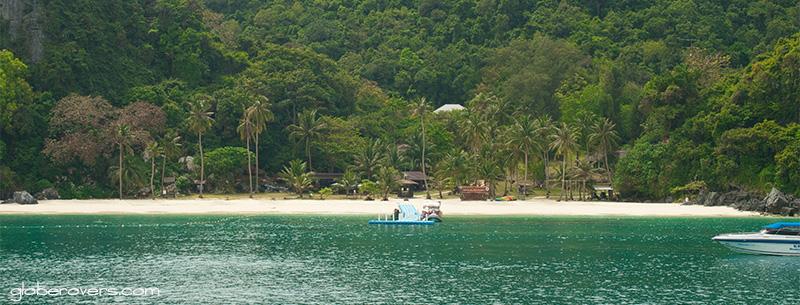
Region 5: The Central Gulf of Thailand
(See bottom of post for links to more regions)
The Central Gulf of Thailand is dominated by the popular and developed Koh Samui. The region is also a favourite among backpackers, and full-moon parties thrive. Even so, these beautiful islands, known for their crystal clear waters, have many laid-back coves where life seems to stand still.
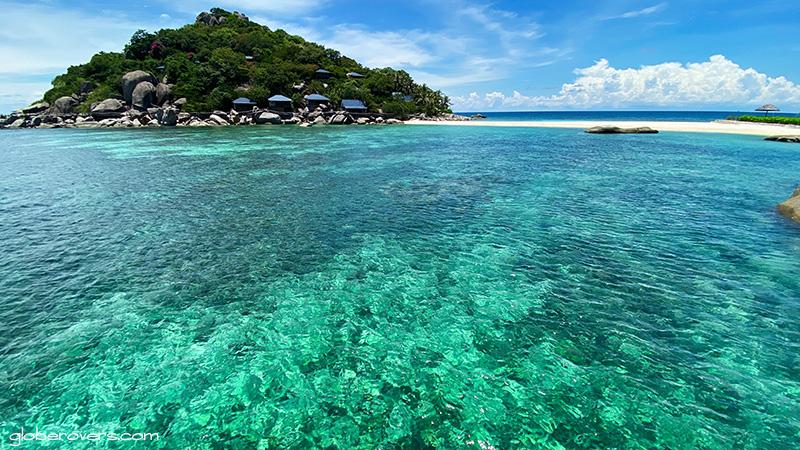
Table of Contents
Location & Gateway
We move east to the Gulf of Thailand. While the southern gulf north of Malaysia has no islands of note, the central gulf near the towns of Surat Thani and Chumphon has some extraordinarily beautiful islands.
This region is dominated by the popular Koh Samui, Thailand’s second-largest island with a land area of 229 square kilometres (88 mi²). Development has been rapid over the past 20 years, so today’s Koh Samui is very different from what it was 30 years ago.
A popular tourist area where finding a lonely beach is still not too difficult.
North of Koh Samui lies Koh Pha Ngan, with Koh Tao even farther north. To the west of Koh Samui—and the closest group of islands to the mainland—is the Mu Koh Ang Thong National Marine Park, a pristine archipelago of 42 islands covering 102 square kilometres (39 mi²).
The gateways to this region are Chumphon for Koh Tao, and Surat Thani for the remaining islands. Inter-island ferries connect all the main islands

Notable Islands with Lodging
While Koh Samui, Koh Pha Ngan and Koh Tao nowadays have a variety of tourist accommodation and a mind-boggling number of restaurants and bars, Koh Ang Thong remains undeveloped due to its protected status as part of the national park. Koh Pha Ngan and Koh Tao are both known for their backpacker scene and rowdy parties, though both islands have several off-the-grid beaches with a more relaxed atmosphere.
1) Koh Samui
Koh Samui, with its international airport, offers an endless number of luxury resorts and spas complete with yoga retreats, cleansing fasts, tai-chi camps, and chakra-balancing treatments. While over-developed and crowded with tourists, expatriates and locals, the island is known for its palm-dotted beaches and coconut groves

2) Koh Taen and Koh Mat Sum
To get a feel for what Koh Samui was like 30 years ago, head south to Koh Taen, a small island off its southern tip. Koh Taen has a tiny fishing community, Thong Krut, as well as deserted white sandy beaches, a restaurant or two, and fan-cooled accommodation at Koh Tan Village Bungalows.
To the east lies the even smaller island of Koh Mat Sum (also written as Koh Matsum and Koh Mudsum) with a lovely white sandy beach, and great snorkelling and kayaking. The only accommodation is the Treasure Koh Madsum Resort.

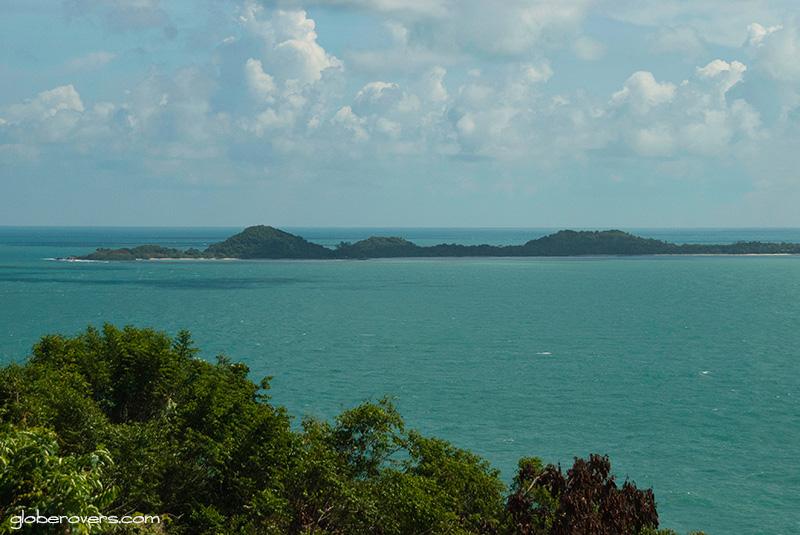
3) Koh Pha Ngan
North of Koh Samui lies Koh Pha Ngan, the fifth-largest island in Thailand and the second-largest in this region. Popular with backpackers who attend the full-moon parties at Haad Rin Beach and late-night beach parties that involve fire dancers, the island also offers lush jungles, granite boulders, and beautiful beaches.
While the western beaches are the most developed, the far north and a few small eastern beaches are a lot more laid-back. The island has a good network of roads, mostly along the western side, which makes it easy to get around on either two or four wheels.
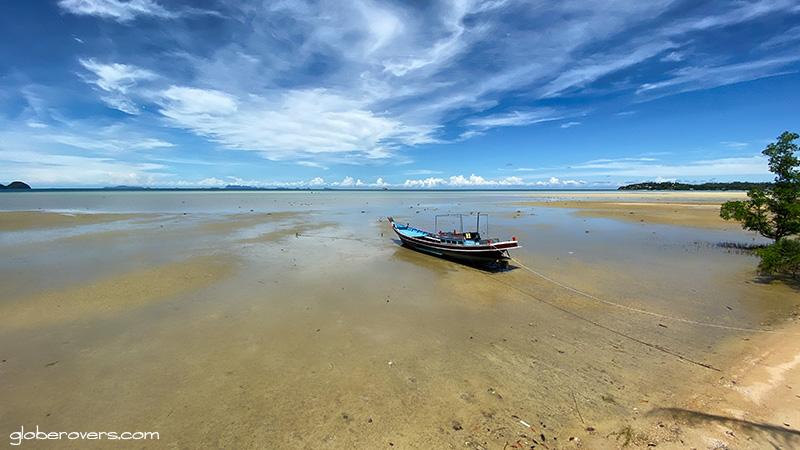
4) Koh Tao and Koh Nang Yuan
Koh Tao (Turtle Island) lies to the northwest of Koh Pha Ngan and is one of Thailand’s island gems, especially the nearby Koh Nang Yuan.
Koh Tao is particularly popular for its diving spots and its scuba dive schools. Just like Koh Pha Ngan, the most popular beaches are along the west coast, while the northern and eastern sides have only a few smaller beaches. The island has a good network of paved roads fit for cars, though most travellers get around by motorbike.
The island is very hilly, in particular on the eastern side, so unless you are a confident biker you had better not take on these roads. While nearly every bay and cove on the east side has some accommodation, the beaches are generally laid-back.

5) Koh Ang Thong Archipelago
The Ang Thong National Marine Park is an enchanting archipelago that features towering limestone mountains, lush tropical jungles, ruggedly steep limestone cliffs, sinkholes, deserted white sand beaches, lagoons, waterfalls, hidden coves, and submerged caves. Its biodiversity is rich, and it is home to long-tailed macaques, gibbons, Oriental hornbills, herons, pacific reef egrets, and thousands of fruit bats.
Koh Mae Ko features an emerald-green saltwater lagoon called Thale Nai, surrounded by limestone cliffs and connected to the sea by a series of underwater caves. The island also has two lookout points with sweeping panoramas overlooking many islands in the archipelago.
The island of Koh Wua Ta Lap, immediately to the south, is known for its spectacular viewpoint, which can be reached by a very challenging 500-metre-long (1,640 ft) steep trail starting from the National Parks headquarters.
The park’s islands are mostly uninhabited except for fishing villages on Koh Wua Ta Lap and Koh Phaluai.
Accommodation is available at the National Parks office on Koh Wua Ta Lap where tents and a few simple bungalows are available for rent. The facilities here include a restaurant, visitor centre, first aid tent and kayaks for rent.
Bookings can be made in person at travel agencies on Koh Samui, Koh Tao, Koh Pha Ngan, Surat Thani or directly through the National Parks online reservation system.
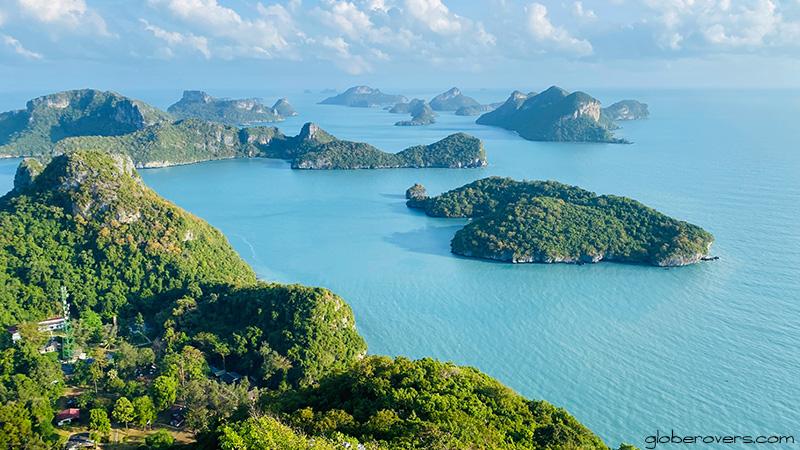
The Unspoiled Beaches
The region’s islands are popular among locals and foreigners alike, though it is not difficult to find gorgeous beaches off the normal tourist trails.
While most take some effort to reach, the journeys are much rewarded. Among the best beaches on islands with accommodation are:
1) Nang Yuan Island at Koh Tao
Located just 550 metres (1,800 ft) off the north-western end of Koh Tao, Koh Nang Yuan is one of the most photogenic spots in Thailand. Koh Nang Yuan consists of three islands, with the two smaller islands sporting a 90-metre-long (295 ft) white non-submersible sandbar connecting them.
Sadly, this pristine island has become a very popular tourist attraction and now has a string of bungalows, a dive shop, restaurant, and even requires an entrance fee. The water on both sides of the sandbar, in particular the west side, has brilliantly clear aquamarine hues. A footpath leads to the high rocks above the bungalows from where the view over the islands is spectacular.
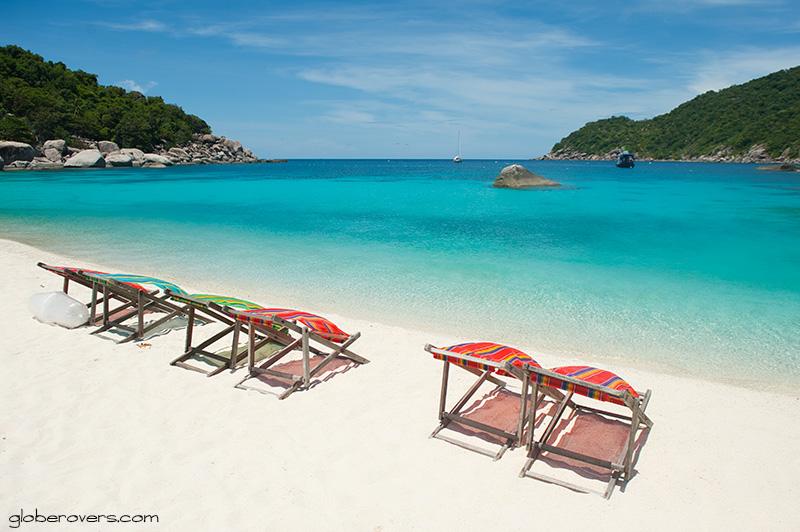
2) Tanote Beach, Koh Tao
Koh Tao has many beautiful beaches and the best are located on the eastern side of the island. Tanote Beach, one of the best snorkelling spots on the island, has clear water, golden sand, and many large boulders to swim around.
A big boulder near the beach is ideal for adrenaline junkies who use a metal chain to climb up, and gravity to splash down into the water several metres below

3) Secret Beach (Degree Bay), Koh Wua Ta Lap Island, Mu Ko Ang Thong
The Ang Thong Archipelago of 42 islands is blessed with many beautiful beaches, though one of the most striking is at Degree Bay on Ko Wua Ta Lap Island.
The beautiful beach has no accommodation and the imposing rock formations are stunning. A hike over the hill goes to Kha Bay Beach with its floating pier and a few bungalows and a small campground.
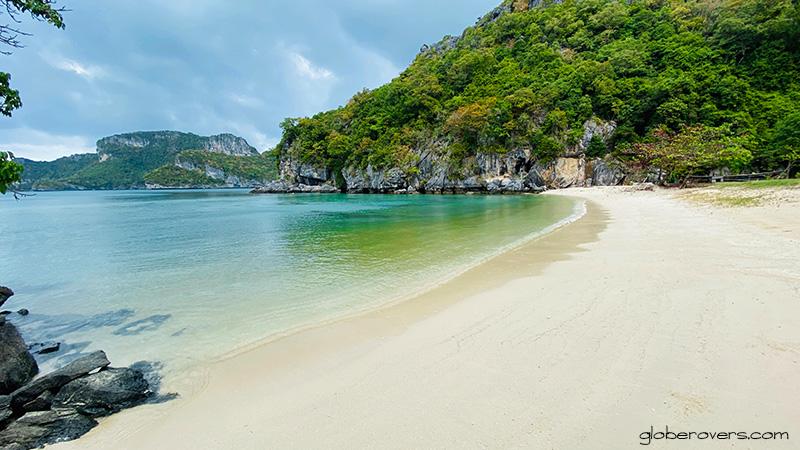
4) Haad Yuan, Tien East, and Haad Wai Nam, Koh Pha Ngan
Haad Rin Beach is infamous for its rowdy full-moon parties, and is best visited during the new moon by those who wish to avoid them.
While Haad Rin Beach is beautiful, the three secluded coves along the south-east of the island have the most unspoiled beaches.
While a long-tail boat can reach these coves in about 10 to 15 minutes from Haad Rin Beach, leave the beach on foot via the jungle path for an exhilarating adventure.
The small, scenic path has many challenges as it crawls up and down the hills and eventually descends onto Haad Yuan Beach. From here the path continues north to Haad Tien and then to Haad Wai Nam Beach.
Much further north are the hard-to-reach beaches of Haad Yao East, Haad Yang, and Haad Nam Tok, all best accessed by boat.
The east coast offers ample opportunities for determined hikers to reach the island’s most hidden beaches.
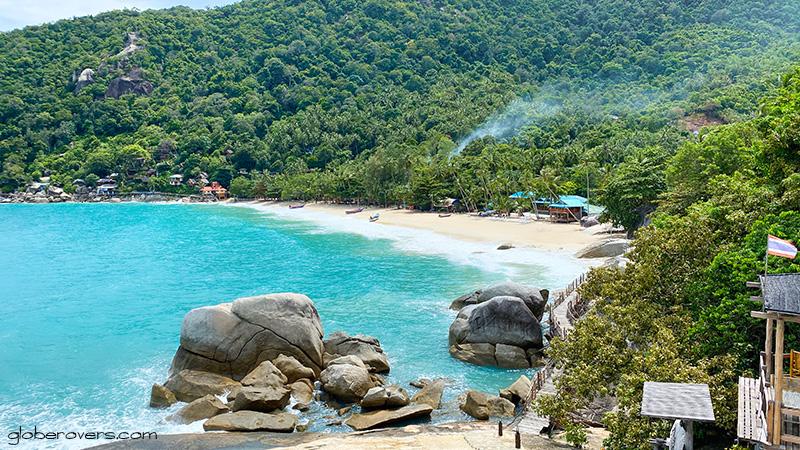
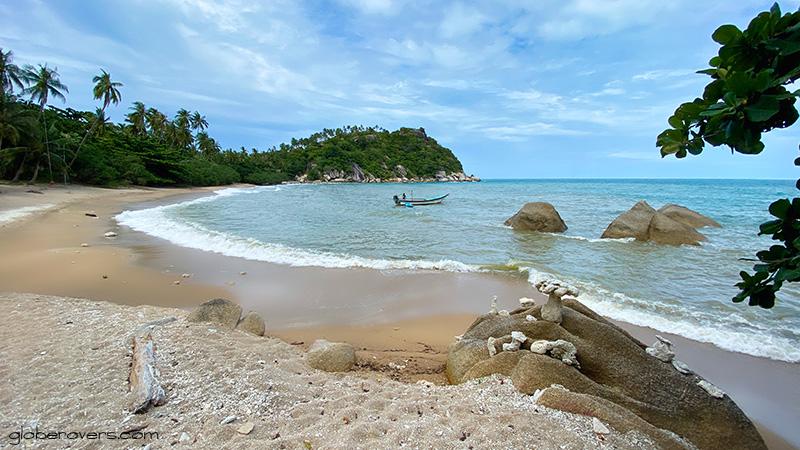
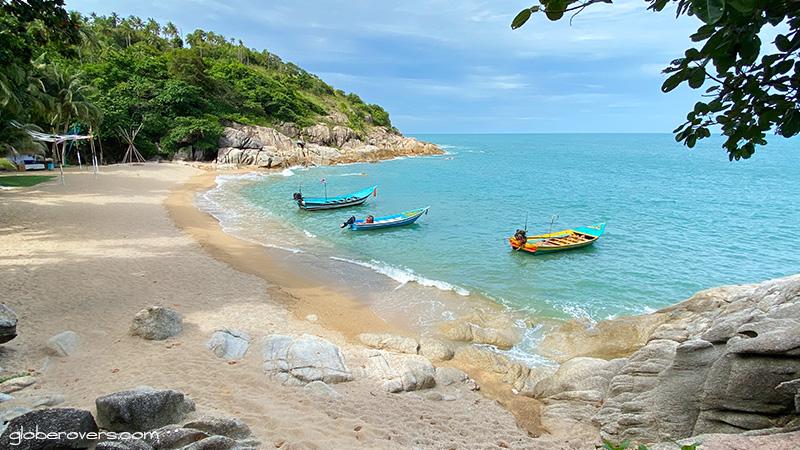
5) Mae Haad, Koh Pha Ngan
While the entire west coast of Koh Pha Ngan is lined with cosy bays and superb beaches, Mae Haad Beach at the northwestern tip is one of the very best.
Wang Sai Resort has lovely bungalows and a restaurant on the beach near the water. A walk along the beach leads to the small island of Koh Ma, connected by a sandbank.
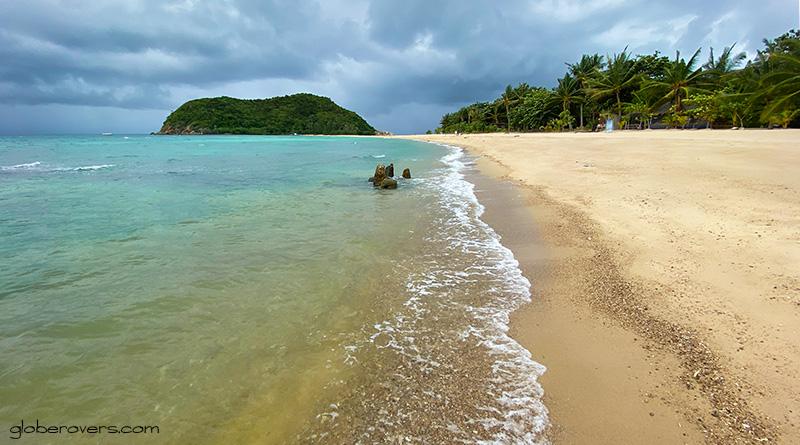
Practical Information
Getting there: Ferries and speedboats depart from northeast of Surat Thani at Donsak Pier and nearby Raja Pier to all these islands. Koh Tao is best reached via Koh Samui, Koh Pha Ngan, or if coming from Bangkok, by taking a boat from the Lomprayah Pier south of Chumphon.
Both Chumphon and Surat Thani are on the main railway lines from Bangkok and can also be reached by overnight bus from Bangkok. Surat Thani Airport is located 94 kilometres (58 mi) west of Donsak Pier.
The best way to reach Koh Ang Thong is to take a shared boat or day tour from either Koh Samui or Koh Pha Ngan. There are no regular boat services to Ang Thong Marine Park so the only way to get there is to take a day tour, even if staying overnight. At Donsak Pier you may be able to board a local boat to the islands.
Getting around: Car rental only makes sense on the larger islands of Koh Samui and Koh Pha Ngan while motorbikes and bicycles are the recommended way to get around on all islands except Koh Ang Thong, which has no road network.
Sleep, eat and drink: Koh Samui, Koh Pha Ngan, and Koh Tao have a plethora of accommodation, restaurants and bars while on Koh Ang Thong sleeping and eating are limited to the National Parks facilities.

Links to all island regions of Thailand
Overview and map of Thailand’s Islands
Region 1: Southern Andaman (Koh Lipe area)
Region 2: Lower Central Andaman (Koh Mook area)
Region 3: Upper Central Andaman (Koh Lanta area)
Region 4: Northern Andaman (Koh Phayam area)
Region 5: Central Gulf of Thailand (Koh Samui area) – YOU ARE HERE
Region 6: Eastern Gulf of Thailand (Koh Chang area)
Region 7: Northern Gulf of Thailand (Koh Samet area)
The 10 Best Beaches on Thailand’s Islands
Notes when reading the details in each region
- In the Thai language, “koh” means “island”, so the correct way to refer to the island of Phuket, for example, is “Koh Phuket” rather than “Koh Phuket Island”. “Ao” means “beach”, so “Ao Nang” means “Nang Beach”. “Mu koh” means “archipelago”, so “Mu Koh Ang Thong” means “Ang Thong Archipelago” .
- Some of Thailand’s islands have the same or similar names. Some examples include Koh Chang in the Gulf of Thailand, and Koh Chang Noi along the northern Andaman Coast; and Koh Ngam Yai and Koh Ngam Noi near the town of Chumphon, which is far from Koh Ngam at the southeastern tip of Koh Chang near Cambodia.
- Covid-19 is decimating the tourist infrastructure on Thailand’s islands. Most tourist services, including accommodation and transport services, available pre-Covid are not currently accessible, and may not be restored for a while.
- While some islands can be reached by public ferries, speedboats and long-tail boats, some are only accessible by private boat rental.
- Much effort has been made to provide information that is as accurate as possible, but please do your own extensive research to get the latest information.
- This article focuses on the best beaches on islands with accommodation, though islands managed by the National Parks offering tents for rent are also included. We also include noteworthy islands and beaches of interest with no accommodation.
- This article is not intended as a comprehensive guide to all islands of Thailand.
☛ Read more: Blog posts of Thailand

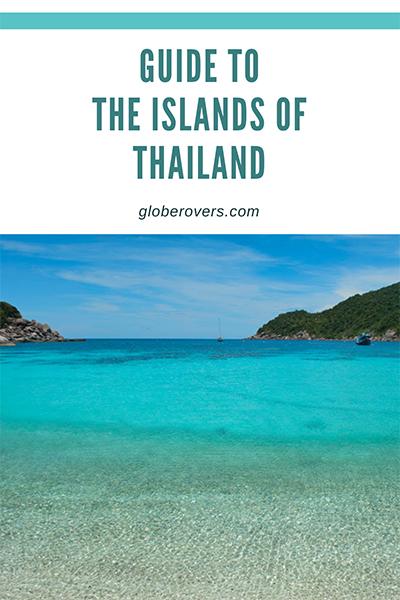
Additional Reading
CNN Traveler: The 11 best islands in Thailand
Top 10 Best Thai Islands that need to be on your bucket list

Blog post and photos by Peter who has been travelling almost full-time since 2005 and has been to over 122 countries. He visited several countries, such as Japan, more than 20 times. Peter is Editor-in-Chief and Publisher of GlobeRovers Magazine, an independent travel magazine focused on intrepid destinations.
